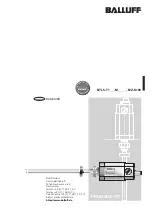
79
15 TROUBLESHOOTING
OPERATION NOTICES
The transceiver has been designed and engineered to
avoid possible hardware glitches. However, you may
notice the following symptoms when you operate the
transceiver. These symptoms are not malfunctions.
DC POWER SUPPLY
As stated in the SPECIFICATIONS {page 80}, this
transceiver requires a supplied DC voltage source of
13.8 V ±15%. If you find that the transceiver cannot
be switched ON, or that it shuts OFF automatically,
the DC voltage may be outside the specified range.
In such a case, remove the DC cable from the
transceiver immediately and confirm that the supplied
voltage is within the specified range.
INTERNAL COOLING FAN
The transceiver detects the temperature of the final
department regardless of the transmission and
reception state of the main body, in order to protect
the internal circuits from high temperatures. The
cooling fan speed and transmission output is controled
through the following.
• When the thermistor detects a rise in temperature
in the final department, the cooling fan turns on at
low speed. As the temperature rises, the speed of
the cooling fan increases.
• When an abnormally high temperature is detected,
the temperature protection circuit activates,
reducing the transmission output to the lowest
possible power.
When the temperature protection circuit activates,
return the transceiver to receive mode and leave the
transceiver power ON. Allow time for the cooling fan
to return the internal temperature to normal.
• If you turn the transceiver power OFF, the cooling
fan will not run and it will take much longer for the
internal temperature to decrease.
INTERNAL BEATS
On some spots of the receiver frequencies, the
S-meter moves or you cannot receive any signals.
This is inevitable when you use superheterodyne
receivers. You may notice the signals on the following
spots of the frequency:
• 15.600.00
MHz
• 31.200.00
MHz
• 46.800.00
MHz
AGC
When you turn the AGC function OFF {page 29}, the
receiving audio signals can be distorted. In this case,
decrease the RF gain, turn the pre-amplifier OFF, or
turn the attenuator ON. In general, the RF gain must
be greatly reduced when the AGC is turned OFF.
60m BAND OPERATION (K-TYPE/ USA ONLY)
Effective from July 3, 2003, FCC Report and Order
(R&O) in ET Docket 02-98 granted US amateurs
secondary access to five discrete channels in the
vicinity of 5 MHz. General, Advanced, and Amateur
Extra licensees may use the following five channels
on a secondary basis with a maximum effective
radiated power of 50 W PEP relative to a half wave
dipole. Only upper sideband suppressed carrier voice
transmissions may be used. The frequencies are
5330.5, 5346.5, 5366.5, 5371.5 and 5403.5 kHz. The
occupied bandwidth is limited to 2.8 kHz centered on
5332, 5348, 5368, 5373, and 5405 kHz respectively.
The TS-590S transceiver stops at the 60 m band as
you scroll up or down the amateur radio frequency
bands. For more information, contact ARRL or search
their Web site using the key word “60 meter”:
http://www.arrl.org






































